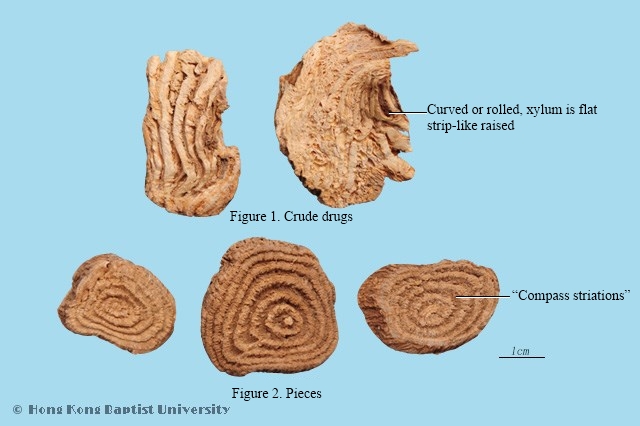Production RegionsPrimarily produced in the Chinese provinces of Hubei, Anhui, Henan.
Macroscopic FeaturesHorizontally cut or longitudinal cut into irregular lumps, uneven sizes. Horizontal cut pieces are curved and uneven, edge is wrinkled, 2.5~6cm diameter, about 4~9mm thick, outer skin is grayish-yellow or grayish-brown; cut surface is off-white or yellowish-white, rough, with numerous eccentric raised projections. Longitudinal cut pieces are rolled, about 4.5~10cm long, 1.5~3cm wide, externally even, xylem often has numerous raised longitudinal lines, firm texture, hard to break. faint odor, slightly sweet then slightly bitter taste, numbing to the tongue after being chewed a while. Large pieces have a white color and are powdery, with obvious rings on both sides.
Quality RequirementsSuperior medicinal material is yellowish-white, large, with few obvious ‘compass striations’, powdery
PropertiesBitter, cold, toxic
FunctionsPromotes urination and dedication, drains water, disperses binds. Apply to edema, swelling and fullness, beriberi, throat impediment, swollen welling-abscesses, and malign sores.
Technical Terms'Compass striations’: This refers to an unusual structure of numerous concentric rings seen on the cut surface of medicinal material; the shape is similar to a compass, and can also be referred to as ‘concentric rings’.
OriginThe dried root of Phytolacca acinosa Roxb or Phytolacca Americana L.(Phytolaccaceae)
